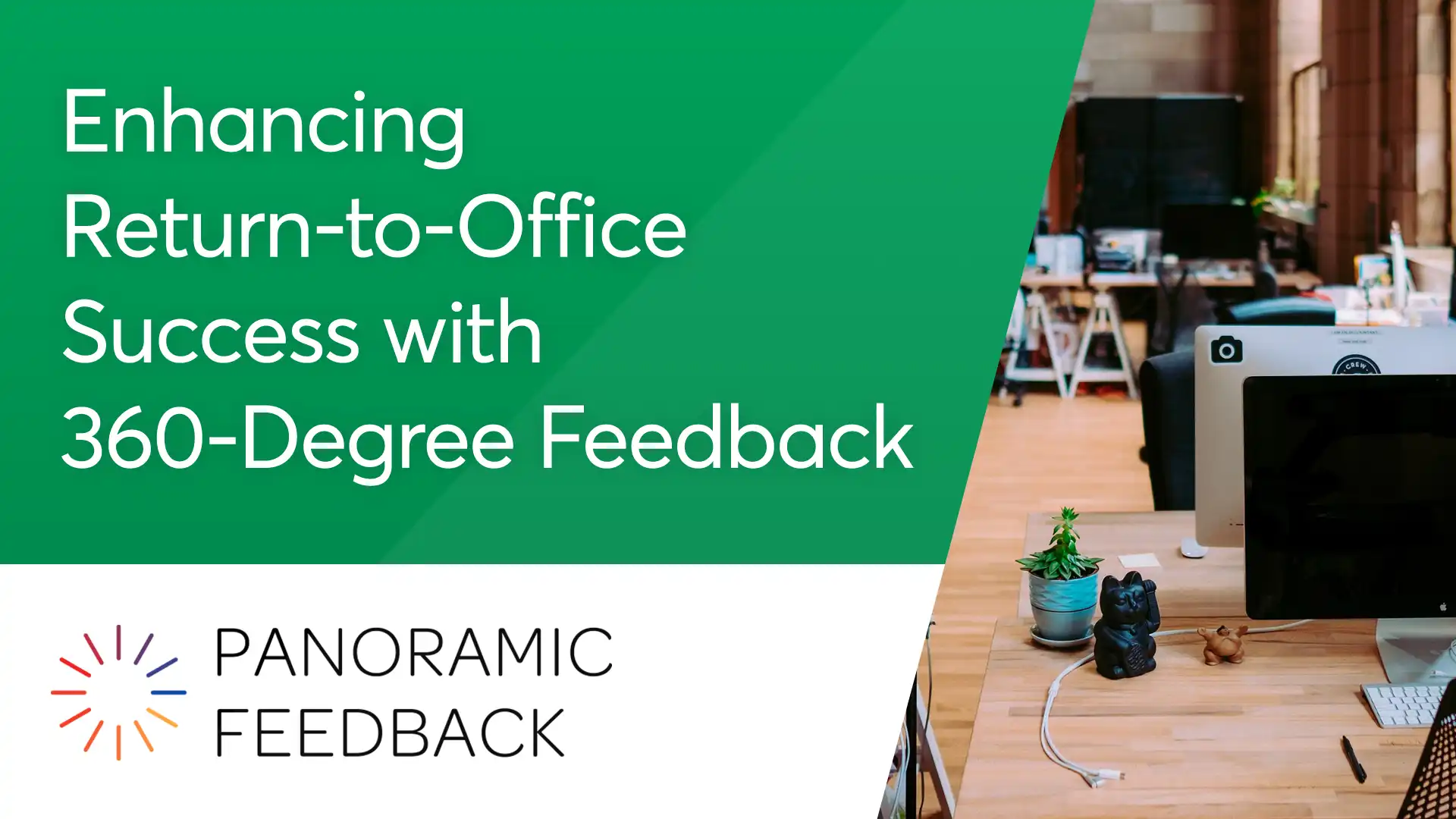As organizations navigate the complexities of returning to the office, ensuring a smooth transition is paramount. The return-to-office (RTO) efforts require a nuanced approach that balances employee well-being, productivity, and the evolving dynamics of hybrid work environments. One powerful tool that can significantly aid in this transition is 360-degree feedback, particularly when delivered through Panoramic Feedback’s comprehensive assessment platform.
Understanding 360-Degree Feedback
360-degree feedback is a process where employees receive confidential, anonymous feedback from the people they work with. This typically includes their manager, peers, and direct reports, as well as self-assessments. The feedback covers a wide range of competencies, from leadership and teamwork to communication and problem-solving.
Unlike traditional top-down feedback, 360-degree feedback provides a well-rounded perspective on an employee’s performance, revealing both strengths and areas for development. This holistic approach is invaluable in fostering personal growth and enhancing organizational effectiveness.
The Role of 360-Degree Feedback in Return-to-Office Efforts
Returning to the office after an extended period of remote work presents unique challenges. Employees have adapted to new ways of working, and organizational dynamics may have shifted. In this context, 360-degree feedback can play a crucial role in ensuring a successful RTO by:
1. Identifying Leadership Gaps:
Leaders are central to driving a successful return to the office. However, the shift from remote to in-office work may highlight gaps in leadership styles or reveal new challenges that require attention. 360-degree feedback provides leaders with insights into how their behaviors and decisions impact their teams, helping them to adapt and lead more effectively in the evolving workplace.
2. Enhancing Team Collaboration:
After months of remote work, rebuilding in-office collaboration can be challenging. 360-degree feedback helps teams understand interpersonal dynamics, uncovering potential friction points and areas where communication can be improved. This insight is vital for creating a cohesive and supportive work environment that encourages collaboration and innovation.
3. Supporting Employee Well-being:
The return to the office can be stressful for employees, particularly those who have grown accustomed to remote work. 360-degree feedback provides employees with a voice, allowing them to express concerns and receive constructive feedback on their work. This process can help alleviate anxiety and foster a culture of support and understanding.
4. Aligning Organizational Culture:
Organizational culture may have evolved during the remote work period. 360-degree feedback helps align employees with the organization’s current values and goals, ensuring that everyone is on the same page as they return to the office. By reinforcing desired behaviors and addressing areas of misalignment, organizations can strengthen their culture and drive success in the post-pandemic workplace.
How Panoramic Feedback Can Help
Panoramic Feedback is a leading provider of 360-degree feedback assessments, offering a flexible and user-friendly platform that is ideal for organizations navigating the return to office. Here’s how Panoramic Feedback can support your RTO efforts:
• Customized Assessments: Panoramic Feedback allows organizations to tailor feedback assessments to their specific needs, focusing on competencies that are most relevant to the return-to-office transition. Whether you want to emphasize leadership adaptability, teamwork, or employee well-being, the platform provides the flexibility to design assessments that align with your objectives.
• Confidential and Actionable Insights: The platform ensures confidentiality, encouraging honest feedback from participants. The results are presented in a clear and actionable format, helping employees and leaders alike to understand the feedback and make informed decisions for improvement.
• Seamless Integration with Existing Systems: Panoramic Feedback easily integrates with your existing HR and performance management systems, ensuring a smooth implementation process. This allows you to quickly deploy assessments and begin gathering valuable insights as part of your RTO strategy.
• Ongoing Support and Development: The return to the office is an ongoing process, and Panoramic Feedback provides continuous support through follow-up assessments, allowing organizations to track progress and adjust strategies as needed.
Consider the Value that 360-Degree Feedback Can Bring
The return to office is more than just a physical shift—it’s a strategic transformation that requires careful planning and execution. By leveraging 360-degree feedback through Panoramic Feedback, organizations can gain the insights needed to support their employees, foster collaboration, and align their culture with the new workplace realities. This comprehensive approach not only ensures a smoother transition but also sets the stage for long-term success in the evolving work environment.
As your organization embarks on its RTO journey, consider the value that 360-degree feedback can bring. With Panoramic Feedback, you have the tools to ensure that your return to the office is not just a return to the status quo but a step forward toward a more engaged, productive, and resilient workplace.


